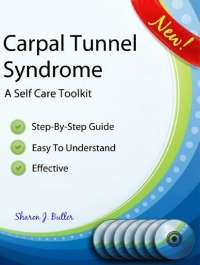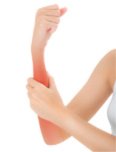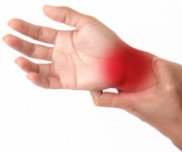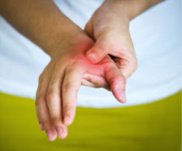Carpal Tunnel Syndrome
Carpal Tunnel Syndrome (CTS) is the most commonly recognized of all the repetitive strain injuries (RSI). It seems that everywhere you go, you find someone wearing a wrist brace: grocery store clerks, computer users, meat processors, laboratory technicians, dental hygienists, hair dressers, house painters, carpenters. It’s everywhere!
Carpal Tunnel Syndrome Is An Injury Of The Median Nerve
So, what do computer users, meat processors, house painters and the others all have in common? They all use the same part of their anatomy in performing their daily activities.
Muscles called the flexor muscles are located on the inside of the forearm (palm side). These muscles are responsible for closing your fingers and thumbs. So, they are involved any time you hold or squeeze something, which we all do all the time we use our hands for anything. These muscles get their feeling and strength from the median nerve.
When there has been a combination of excess strain combined with repetition of movements or activities that cause the flexor muscles to contract over and over again, CTS can be the result. The excess strain and the repetitive movements combine to cause the fascia that surrounds the median nerve to become thicker, sticky and more likely to irritate the nerve that serves so much of your hand and wrist.
"After trying a great number of alternative therapies for RSI, Sharon Butler's stretching program was by far the most helpful to me. Within a few weeks my typing capacity was expanded three-fold, with much less pain. Over time I have reached a point where I feel well most of the time and don't even think about RSI much. Her theory that RSI originates in adhesions of the fascia has corresponded well with my own personal experience."
- Scott W., Electrical Engineer, Ann Arbor, MI
You May Not Have Carpal Tunnel Syndrome!
Many people think that if they have pain in their hands, it is automatically Carpal Tunnel Syndrome. But this is not necessarily so. Many other conditions affecting the hands could also be the cause of your symptoms.
Compare the symptoms you feel with those listed for CTS. If they don’t match, then read about the other repetitive strain injuries covered on this site to find a better match for your condition. It is wise to go to a physician familiar with carpal tunnel syndrome to evaluate your symptoms and to rule out any other possible conditions that could complicate your recovery.
Recovery Is Possible!

Click HERE to Learn More
There are so many things you can do to recover from CTS on your own. Take a look at the self care tips that make recovery easier. Once you have made the changes to how you use your body, strain will be reduced, making way for results that are longer lasting.
Are you looking for a customized program tailored for Carpal Tunnel Syndrome recovery? Then take a look at my Carpal Tunnel Syndrome Self Care Toolkit for everything you need, all in one package.
Be sure to read the following pages for all the information you need to understand this debilitating hand injury and what you need to do to recover from it.
Carpal Tunnel Syndrome (CTS) Symptoms
Carpal Tunnel Syndrome Anatomy
Carpal Tunnel Syndrome Self Care Tips
If you are interested in the best home recovery program, including step-by-step instruction, the best stretches and exercises and most up to date advice for overcoming your symptoms, click here.
To read about other repetitive strain injuries, return to the Home Page.
Click the block below that most closely matches your injury for more information and to find the Toolkit we offer to help you in your recovery.







